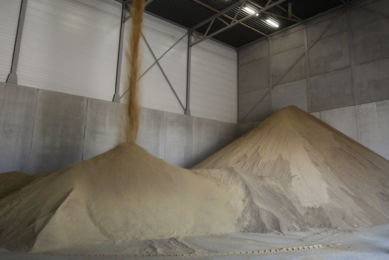Pig experts, remember forgotten relationships!

Does every nutritionist think of the effects minerals may have – on the animal as well as on each other? It is always important to look at the bigger picture, writes regular pig nutrition technology expert Dr Casey Bradley.
Okay, so the headline might conjure up visions of sappy romance novels, but this month’s topic is anything but romantic. Rekindling human relationships may have been on the minds of USA swine nutritionists recently flocking to the American Society of Animal Science (ASAS) Midwest meetings, but I’ve yet to witness much in the way of romance there…
No, the relationships I want to focus on are between minerals, and how overlooking or misinterpreting those relationships has far graver consequences.
Sow mortality and lameness
Sow mortality and lameness remain major issues for swine producers, for example, and as a sow manager myself in the past I know only too well that even 1 lost sow or litter is 1 too many. Yet many of the mineral-based ‘solutions’ currently spreading through the rumour mill appear little more than old wives’ tales or a nutritionist’s attempt at homeopathic medicine.
I’m regularly pulled into conversations on minerals, perhaps because of my dissertation work with organic trace minerals in sows, though my expertise is nowhere near that of one of my mentors, Dr Don Mahan. However, I know enough to understand that you can rarely get away with targeting one mineral in isolation.
Reducing the incidence of uterine prolapses
Figure 1 is one of the first things given to students of mineral nutrition to highlight the complexities involved. And it’s these critical interrelationships which seem to get forgotten, such as when discussions turn to 2-3 times increases in salt and magnesium sulphate inclusion to help reduce the incidence of uterine prolapses.
Figure 1 – Mineral interrelationships.
I’ve used both in the past as ‘treatments’ for rectal prolapses, flank biting and aggression, and I have used magnesium oxide for constipation. But you’d better be checking your farrowing house water nipples and flow rates every day and have plenty of spare capacity to store the extra urine produced!
Do the benefits outweigh costs?
I personally don’t see salt hurting the sows, and they might actually love the taste and eat more. But without fully evaluating the implications for overall mineral nutrition, how can we know whether the benefits truly outweigh the cost? I was recently speaking with a nutritionist whose customer tried this and it caused severe hypertension in the sows and per the conversation, the sows’ udders seemed to be close to exploding, which does not bode well for lactation performance.
As for the likes of magnesium sulphate, I can assure you that having endured two 24-hour treatments myself in response to pre-eclampsia during pregnancy – Arthur was born 9.5 weeks pre-term – there are definitely interactions going elsewhere in the body. You literally feel like your eyes and skin are on fire!
Yet in humans, this treatment has been well documented since the 1960s, and it was closely monitored with blood and urine tests every few hours to ensure it didn’t turn into magnesium toxicity.
Blood versus liver or bone
Also, just because serum levels of magnesium appear to be low, does not mean that the system will up-regulate to absorb more magnesium; other tissues need to be evaluated to truly understand if there is a mineral deficiency as some are tightly regulated in the blood versus the liver or bone. In my last column, I discussed correlation versus causation. Well, for minerals it’s a case of ‘for every action there’s a reaction’… with apologies to Sir Isaac Newton for the misquote…
So always remember the bigger picture, rekindle those forgotten relationships, and you can keep the details of any romance to yourselves…












